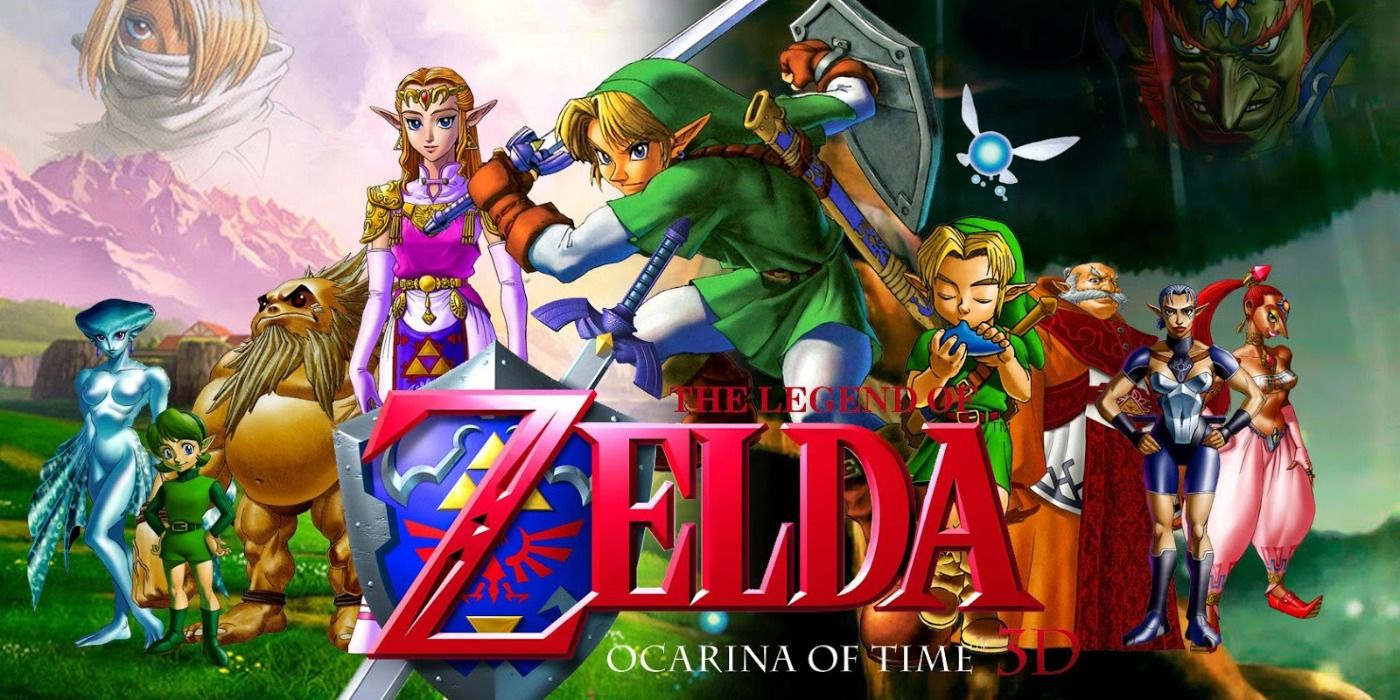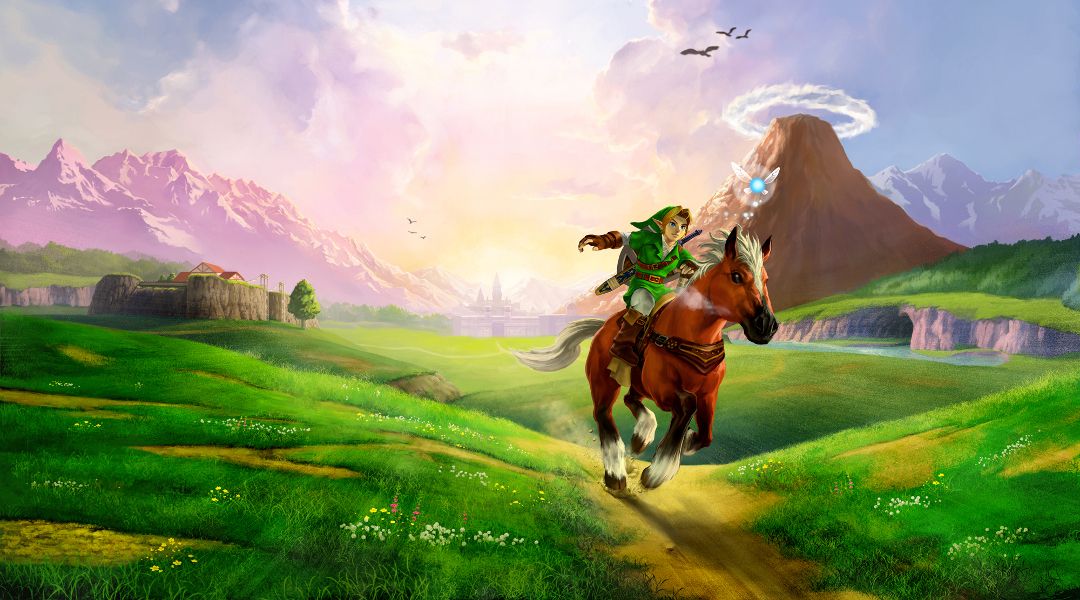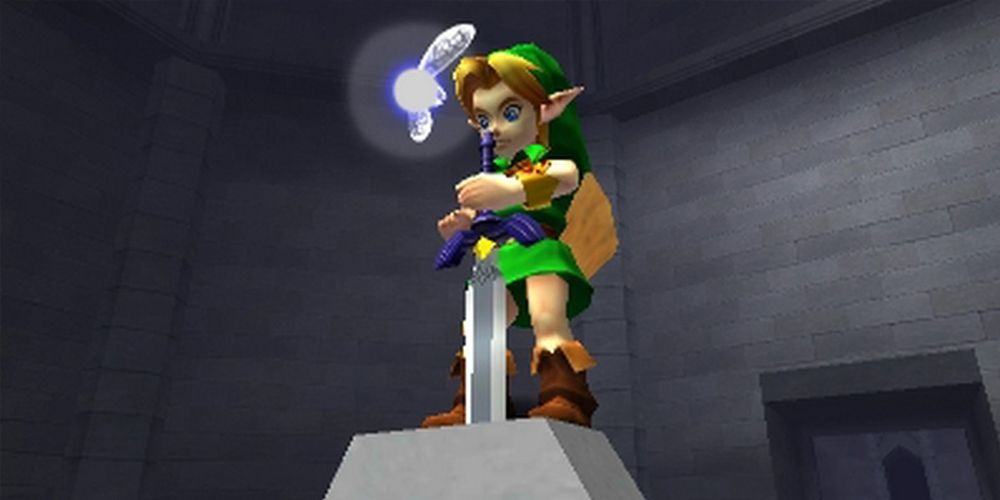
Today, February 21st, The Legend of Zelda is celebrating its 35th anniversary. The Zelda series has produced multiple industry-shaping hits over its lifetime, though perhaps none more so than 1998’s The Legend of Zelda: Ocarina of Time. Often considered as a genre-defining 3D action-adventure title, Ocarina of Time is one of gaming’s all-time classics and is commonly brought up in discussions about the most influential game of all time. Nintendo struck gold with this one, and its world and formula have persisted to some extent in every 3D Zelda since.
Every aspect of The Legend of Zelda: Ocarina of Time is iconic, from its jingles while picking up items to its tennis battle with Ganondorf. Even as fans and critics alike praised Breath of the Wild for its successful integration of open world gameplay in a Zelda context, some couldn’t help but yearn for the days when Link travelled between dungeons, obtained dungeon items to help his quest, and only picked up one breakable weapon from a sidequest. While The Legend of Zelda: A Link to the Past and the original Legend of Zelda pioneered those elements, Ocarina of Time continued to refine them and integrate them into its massive-feeling 3D world.
RELATED: The Legend Of Zelda: Ocarina Of Time Vs Super Mario 64 - Which Game Is Better?

Ocarina of Time’s take on Hyrule revolutionized how console gamers thought about games; it introduced them to a truly interconnected 3D world. Even on the Nintendo 64, while there were transitions between areas, there were never any loading screens, keeping the experience of exploring dungeons and the various areas connected to Hyrule Field brisk and convenient. Those dungeons, while feeling like chores or mazes at times (particularly the infamous Water Temple), set a new standard for third-person level design, and have been built upon by Zelda games and imitators ever since.
One of the most incredible parts of Ocarina’s world, and one that is usually not brought up, is that there are technically four versions of the overworld: Young Link day, Young Link night, Adult Link day, and Adult Link night. While the Adult versions are not quite as pronounced due to the Castle Town Market being unavailable, it is still striking how the game adapts both the Link to the Past light/dark world formula as well as a day/night cycle, and makes them both work. Exploring nooks and crannies at different times show off just how much content is packed into this old game.
And what Adult Link’s Hyrule lacks in nocturnal minigames, it more than makes up for in the amount of choice players have in how they progress. While there is a suggested dungeon order and the Sages must be rescued to challenge Ganon’s Castle, Link can warp around Hyrule and begin the various temples in any order he wishes. There are even a couple locations that require a younger Link to complete. This “open field” concept gives the player a strong feeling of freedom, and is still impressive in the modern day.

The world of The Legend of Zelda: Ocarina of Time was open for exploration, and players quickly found themselves sucked in by its charm. The music was incredible, the people were strange and alluring, and the visuals, while dated, held a distinct cartoon-y style. In addition, many Zelda staples were introduced and codified in this game. While Ocarina borrows a lot from A Link to the Past, when people think of the different races of Hyrule, spellcasting instruments, assorted recurring monsters, and even human Ganondorf himself, the first game they turn to is Ocarina. Its unique fantasy aesthetic has proven to have a timeless appeal that the series still uses as a base.
Tying that world together is the epic fantasy narrative featuring an orphan child raised in the woods rising up to become the Hero of Time, one of the strongest Links, and slaying the sorcerous bandit king of the Gerudo. While straightforward, it’s easy for children to empathize with this nine-year old Link’s struggles, and embrace the themes of growing up and demonstrating courage. Ganondorf came off as much more crafty and ruthless compared to the average Nintendo antagonist, even manipulating the player into giving him what he wants. And of course, it should not be forgotten that this is a rare well-done time travel story, even if the time travel elements are far simpler than most.
The Legend of Zelda: Ocarina of Time remains a timeless classic, and a standout entry in the 3D side of the franchise. With a 3DS remake available and new romhacks, randomizers, and even builds for it still coming out, people will likely be enjoying Ocarina of Time for years to come. There may even be an Ocarina Nintendo Switch release in the works for the year, much like several 3D Mario games were released on Switch last year. For now, fans have to wait and see as Nintendo appears to be approaching this anniversary differently.
The Legend of Zelda franchise will celebrates its 35th anniversary on February 21st.
MORE: 10 Mistakes Everyone Makes On Their First Playthrough Of Ocarina Of Time

